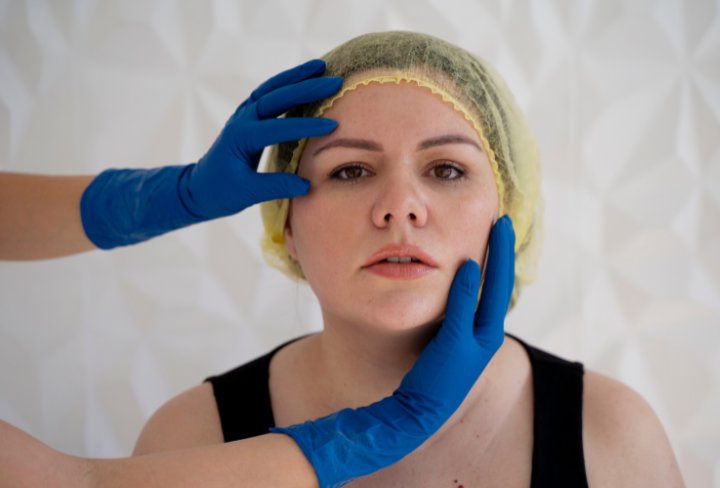Eyelid surgery, or blepharoplasty, is a life-changing operation that can improve your appearance and standard of living. Whether you’re considering it for aesthetic reasons or functional improvement, understanding the aftercare, candidacy, and common concerns is essential for a smooth and successful experience.
Aftercare Tips for Blepharoplasty
The best outcomes from blepharoplasty depend on proper post-operative care. Here is a detailed recovery guide:
1. Managing Swelling and Bruising
- Use cold compresses during the first 48 hours to reduce swelling.
- Keep your head elevated when sleeping or resting to minimize fluid retention.
2. Taking Good Care of Your Cuts
- As directed by your surgeon, gently clean the areas where the incision was made.
- To keep the area hydrated and encourage healing, apply any ointments that have been prescribed.
3. Eye Protection
- When you’re outside, wear dark sunglasses to protect your eyes from the sun.
- To keep your eyes hydrated and avoid dryness, use artificial tears.
4. Restricting Exercise
- For at least two weeks, refrain from bending over, heavy lifting, and intense activity.
- Avoid touching or rubbing your eyes.
5. Follow-up Consultations
- To guarantee appropriate recovery, show up for all planned follow-ups.
- Notify your surgeon right away if you experience any unexpected symptoms, such as severe pain, oedema, or redness.
Who Makes a Perfect Blepharoplasty Candidate?
Although blepharoplasty isn’t for everyone, it’s a great choice for people with particular requirements and ailments:
Qualities of the Best Candidates:
Physical Issues:
- Upper eyelids that are drooping or sagging and could block vision.
- Visible bags beneath the eyes or puffy lower eyelids.
- Excess skin on the eyelids that gives the look of ageing or fatigue.
General Health:
- Nonsmokers without any severe illnesses that could hinder their ability to heal.
- People without long-term eye conditions like glaucoma or extreme dry eye.
Reasonable Expectations:
- Patients who are aware of the outcomes will improve their appearance without significantly changing it.
Age-Related Considerations:
- The majority of applicants are 35 years of age or older, while there isn’t a set age restriction. Younger people who are genetically predisposed to puffy or drooping eyelids can be eligible.
In conclusion
Blepharoplasty is an amazing operation that offers both functional advantages and aesthetic enhancement. A smooth recovery is guaranteed by proper aftercare, and realistic expectations can be set by being aware of possibilities. Always seek the advice of a skilled surgeon to discuss your particular requirements and objectives.
FAQs
1. Is blepharoplasty painful?
The procedure itself is painless due to anesthesia. Post-operative discomfort is mild and manageable with prescribed pain relievers. Most patients report a feeling of tightness rather than pain.
2. Will scars be noticeable?
Because the incisions are carefully positioned inside the lower eyelid or in natural creases, the scars are essentially undetectable when they heal.
3. How much time does it take to recover?
It takes ten to fourteen days for the initial recovery, which includes less bruising and swelling. After four to six weeks, full results are apparent.
4. Is it possible to combine blepharoplasty with other procedures?
Indeed! For a more thorough rejuvenation, it’s frequently paired with laser resurfacing, facelifts, or brow lifts.
5. Are the results permanent?
While blepharoplasty provides long-lasting results, the natural aging process continues. Most patients enjoy their results for 10+ years before considering any touch-ups.
6. What are the risks?
Blepharoplasty carries the same dangers as any surgery, such as the possibility of infection, dry eyes, asymmetry, or trouble closing the eyelids while they heal. Selecting a skilled surgeon reduces these dangers.

